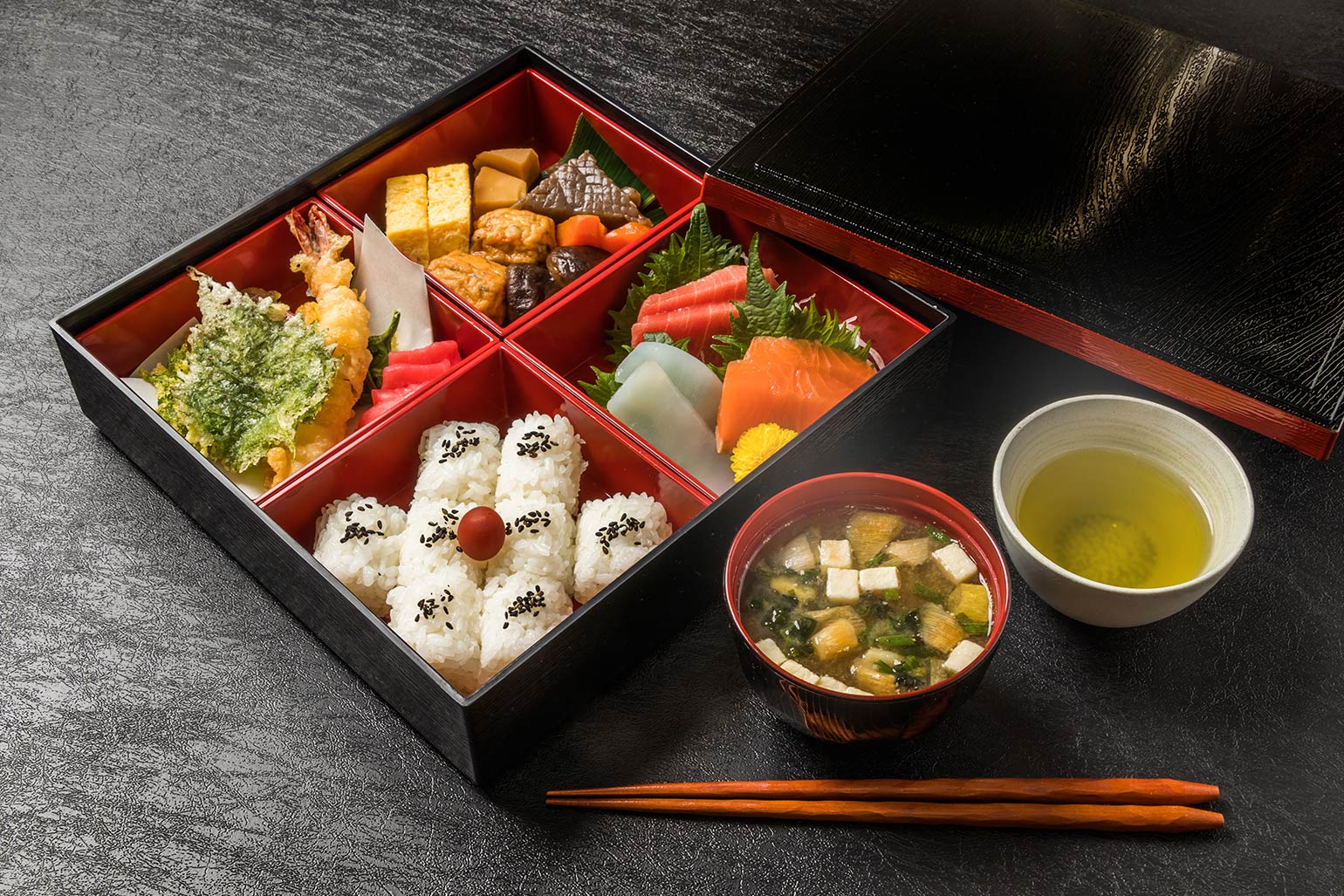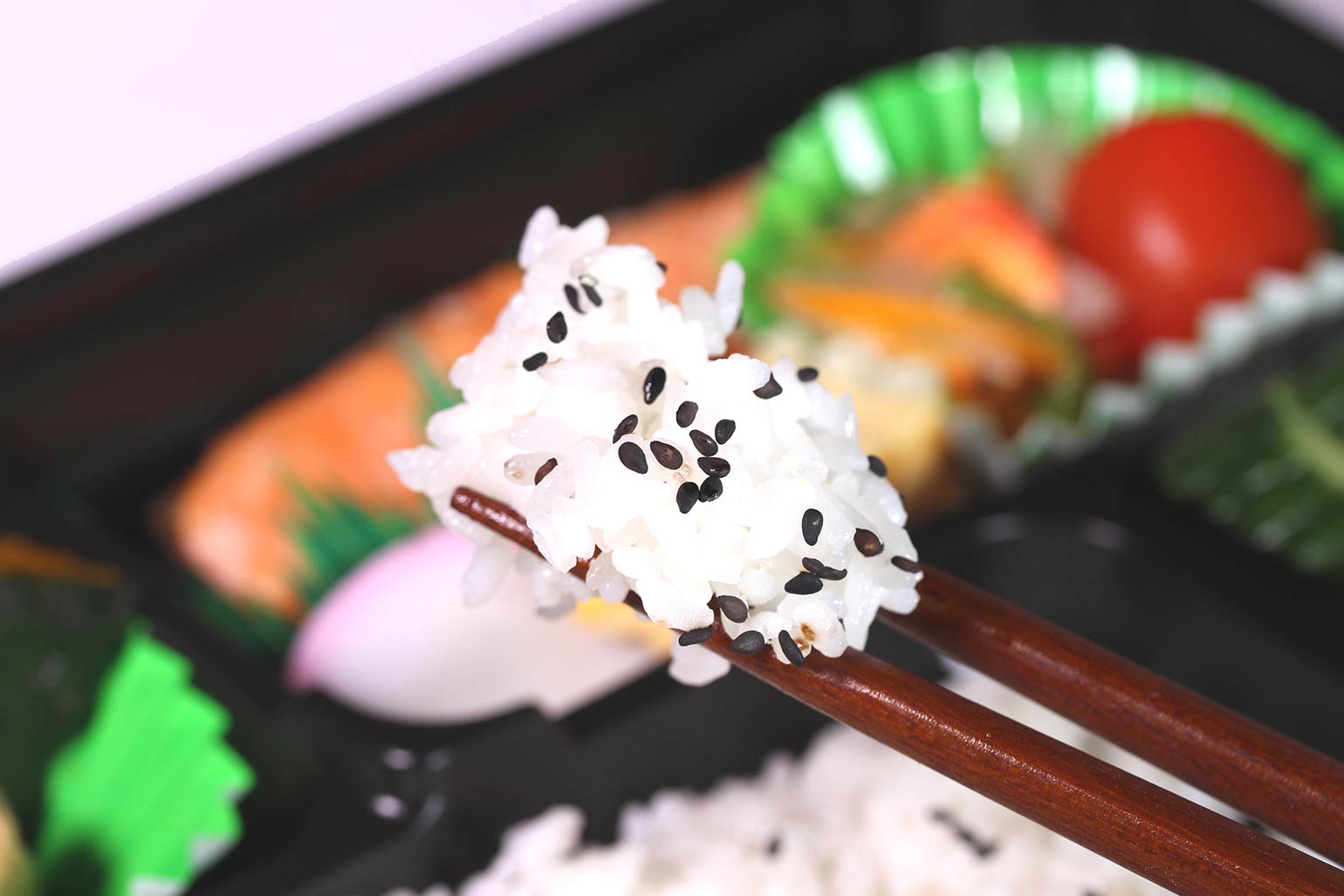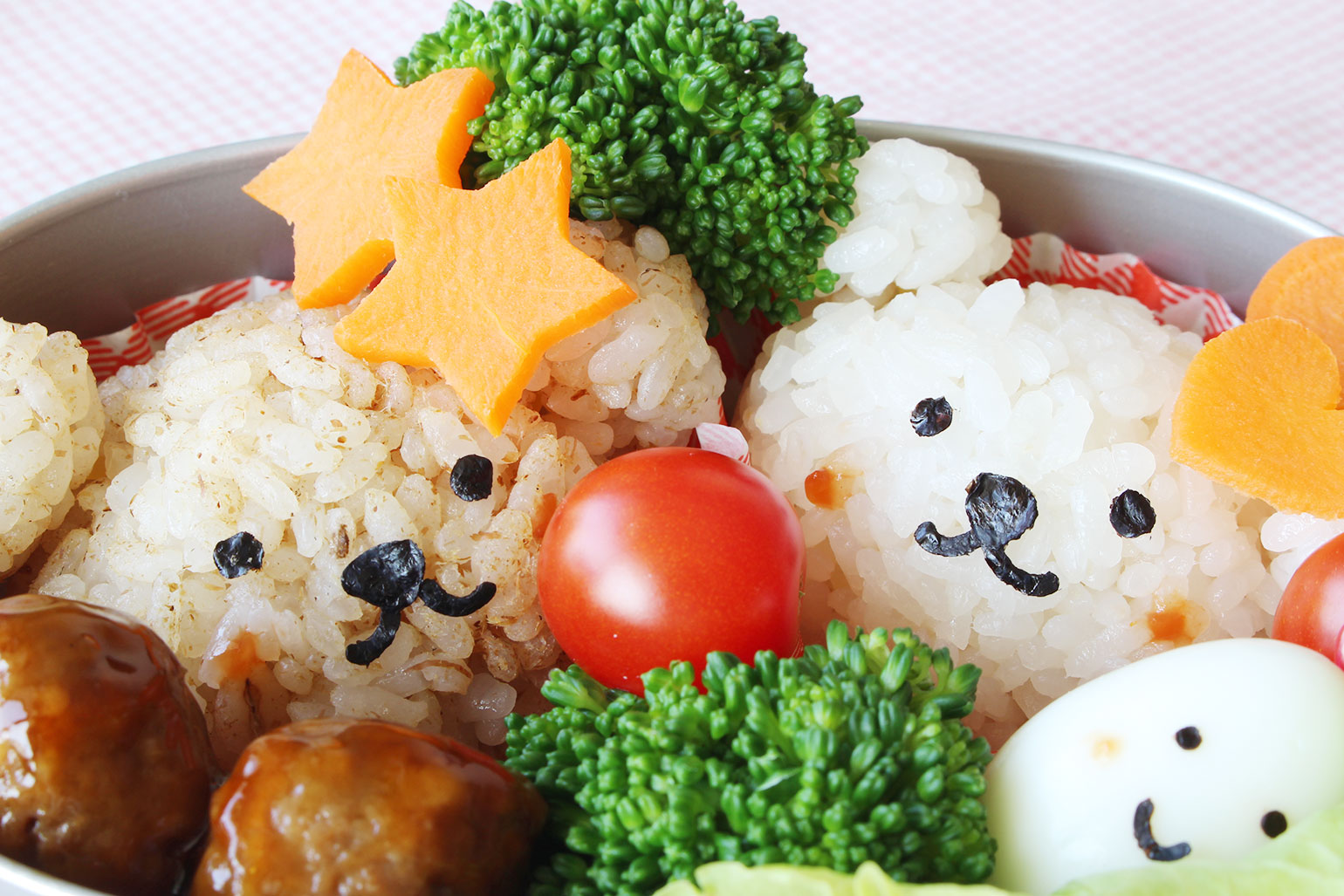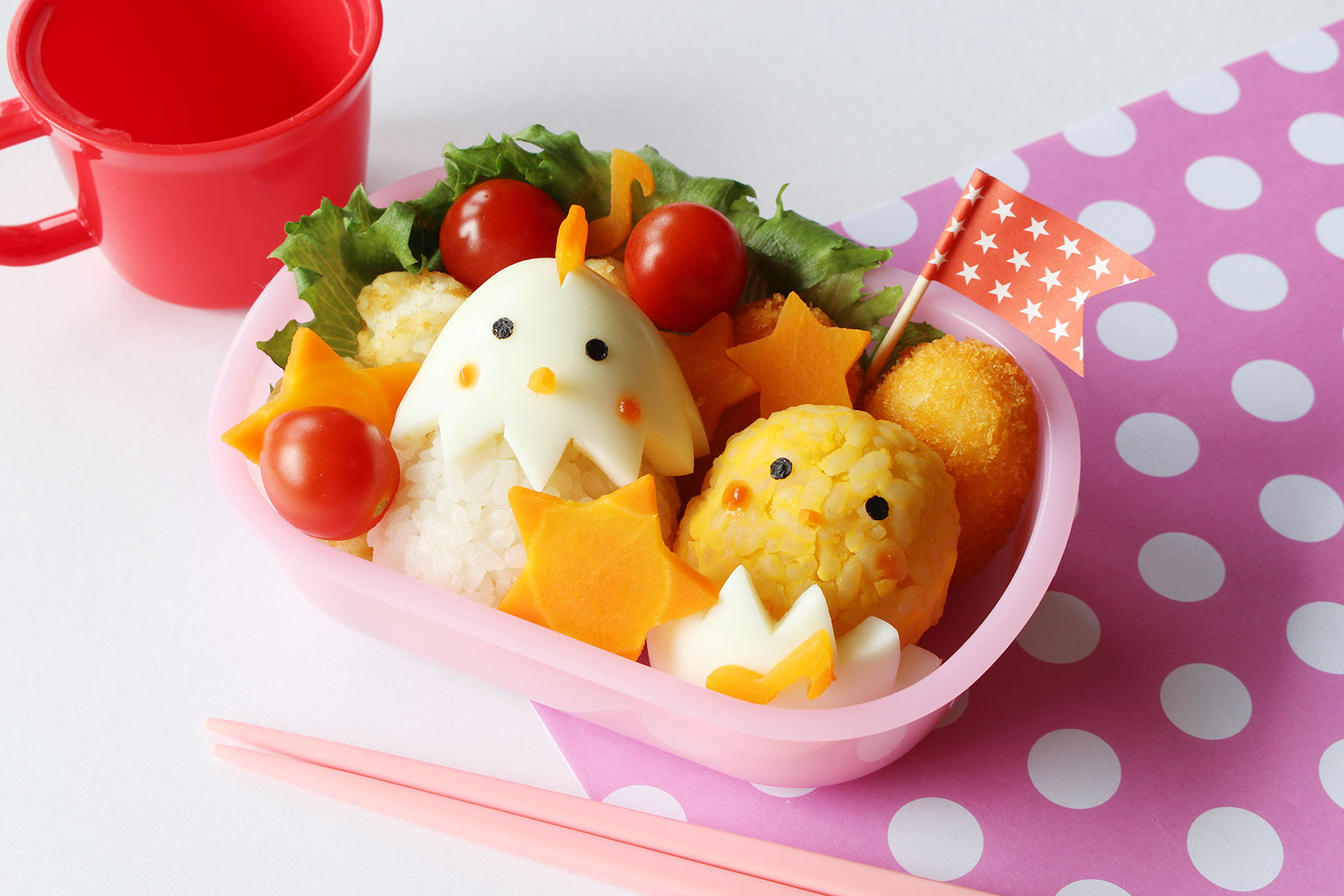Since ancient times, people all over the world have devised various ways to carry cooked food with them. They all had been trying quite many ways to make food more convenient to store, transport, and carry. And they had been developing various cooking methods (including processing methods) for such portable food… In Japan, as in other countries, a variety of portable foods had been devising. Many of these methods involved carrying food that could be stored and easily prepared on the spot. Well, if you are just taking food to a nearby place, it’s better to have it already cooked, so they invented some kinds of “onigiri”, which are rice balls filled with a side dish and rolled up. And so, over time, the “bento” as we know it today was created. A simple way to explain “bento” is that it is a combination of a staple food and a side dish all packed together in the same container. This “bento” method of providing meals, or carrying meals, seems to be rather rare in the world. The method of serving both main dishes and side dishes on a single plate is quite common in other countries / regions, but it is not common to have them compactly combined into a portable form. For Japanese people, this culture of “bento” is very common and familiar. And now it has become an even more familiar part of our food culture. For us, “bento” was a daily meal style to take to work, school, etc., and it was an everyday meal that every household made on a daily basis. Therefore, it was not unusual for each family to have their own standard side dishes or combination patterns of them. Today, most supermarkets and convenience stores have usually a dedicated section for “bento”. There are also specialty bento stores or major chains. It is not surprising that restaurants in the vicinity of the office district offer bento menus in addition to those for in-store dining. As mentioned above, this “bento” culture is a familiar one in Japan today. However, the reason why the “bento” culture has taken root in Japan will be not only because it is easy to transport and carry around and it is a way to satisfy hunger. This is because they are made with a great deal of ingenuity to ensure that they are well-balanced in terms of sufficient calories and nutrients, and that they look and taste satisfying. So, what kind of ingenuity goes into a Japanese “bento”?
 There are several basic components to Japanese cuisine, but one of the most well-known is the “one soup, three side dishes”. This idea is that the menu should consist of five dishes: one soup dish, three side dishes, and rice, the staple food in Japan. This way, you can get enough calories and nutrients in a balanced manner. That’s the idea. Well, this idea is just an “example” of a basic combination. Based on this idea, you can come up with a “good” menu, right? The daily calorie requirements and recommended nutrient intake have changed over time. Especially in recent years, many books have been published on these subjects, and many theories and opinions have been put forward. So, even with the aforementioned “one soup, three side dishes” plus rice, there are many theories and opinions. Such as “No, it is better to have one soup and two side dishes”. Or “It’s better not to have one soup because it causes excessive salt intake”, etc… There are many different theories and opinions. We are not going to say which one of them is right or which one is better than the others here… For now, please understand that there is a basic concept of the Japanese cuisine menu, like these. In addition, Japanese cuisine has the basic concept of “five tastes”, “five colors”, and “five methods”. When planning a Japanese cuisine menu, if these concepts are met, the menu will be healthy, delicious, and beautiful to look at. First, “five tastes” are sweet, salty, sour, bitter, and spicy. “Five colors” refers to the colors of foods (cooked dishes): red, white, black, yellow, and blue. (※ Incidentally, blue, one of the five colors, should be considered “green” rather than “blue”.) The “five methods” refers to the five cooking methods: raw, boiled, baked, steamed, and fried. The concept of “five tastes” and “five colors” comes from the theory of Yin Yang and the five elements. It’s considered one of the most important basic concepts in Chinese herbal medicine. According to this concept, the combination of the taste and color of the medicinal materials (ingredients) can have many different medicinal effects. This basic concept has been incorporated into the Japanese food culture, giving rise to the concept of “five tastes”, “five colors”, and “five methods” in Japanese cuisine menu. In Japanese food culture, the number “five” is also quite important. The basic seasonings for Japanese food are also considered to be the five basic ingredients: sugar, salt, vinegar, soy sauce, and miso. In addition, in Japanese cuisine, it is important to stimulate all five senses in order to enjoy the food. Anyway, there’s a lot of thinking about the “five” basic elements scattered in Japanese food culture. Well, it’s quite difficult to actually cook with these in mind, isn’t it? In Japan, “bento” is usually made with a lot of these in mind. Isn’t it amazing? And in fact, such “bento” are more popular than others. After all, they are all important factors. Since so many different concepts are combined, there is obviously a great deal of variation, right?
There are several basic components to Japanese cuisine, but one of the most well-known is the “one soup, three side dishes”. This idea is that the menu should consist of five dishes: one soup dish, three side dishes, and rice, the staple food in Japan. This way, you can get enough calories and nutrients in a balanced manner. That’s the idea. Well, this idea is just an “example” of a basic combination. Based on this idea, you can come up with a “good” menu, right? The daily calorie requirements and recommended nutrient intake have changed over time. Especially in recent years, many books have been published on these subjects, and many theories and opinions have been put forward. So, even with the aforementioned “one soup, three side dishes” plus rice, there are many theories and opinions. Such as “No, it is better to have one soup and two side dishes”. Or “It’s better not to have one soup because it causes excessive salt intake”, etc… There are many different theories and opinions. We are not going to say which one of them is right or which one is better than the others here… For now, please understand that there is a basic concept of the Japanese cuisine menu, like these. In addition, Japanese cuisine has the basic concept of “five tastes”, “five colors”, and “five methods”. When planning a Japanese cuisine menu, if these concepts are met, the menu will be healthy, delicious, and beautiful to look at. First, “five tastes” are sweet, salty, sour, bitter, and spicy. “Five colors” refers to the colors of foods (cooked dishes): red, white, black, yellow, and blue. (※ Incidentally, blue, one of the five colors, should be considered “green” rather than “blue”.) The “five methods” refers to the five cooking methods: raw, boiled, baked, steamed, and fried. The concept of “five tastes” and “five colors” comes from the theory of Yin Yang and the five elements. It’s considered one of the most important basic concepts in Chinese herbal medicine. According to this concept, the combination of the taste and color of the medicinal materials (ingredients) can have many different medicinal effects. This basic concept has been incorporated into the Japanese food culture, giving rise to the concept of “five tastes”, “five colors”, and “five methods” in Japanese cuisine menu. In Japanese food culture, the number “five” is also quite important. The basic seasonings for Japanese food are also considered to be the five basic ingredients: sugar, salt, vinegar, soy sauce, and miso. In addition, in Japanese cuisine, it is important to stimulate all five senses in order to enjoy the food. Anyway, there’s a lot of thinking about the “five” basic elements scattered in Japanese food culture. Well, it’s quite difficult to actually cook with these in mind, isn’t it? In Japan, “bento” is usually made with a lot of these in mind. Isn’t it amazing? And in fact, such “bento” are more popular than others. After all, they are all important factors. Since so many different concepts are combined, there is obviously a great deal of variation, right?
Japan has always been very tolerant and adaptable to foreign food cultures. In addition to that, well, we had a tendency to obsessively research cooking methods to see if we could somehow make something to our liking. However, thanks to these, Japan’s food culture has become very rich and diverse. “Bento” might reflect quite well the styles, concepts or likings of current Japanese food culture.
Typical Japanese styles of “Bento”
There are several well-known styles of Japanese “bento”. Perhaps many of you have at least heard of them. Below are some of the most common examples of them.


・Makunouchi Bento:
In Japan, the word “bento” refers to all kinds of food packaged together in a portable form. “Makunouchi bento” is one of the styles of bento consisting of rice (white rice) and several side dishes. It is a bento that contains the entire set of “one soup, three vegetables” and rice, which is a well known basic composition of Japanese cuisine, and is the original of this style of bento. (※ However, “one soup” may or may not be included) Around the late Edo period (1603~1868), watching Kabuki and other theatrical performances became widely known as a form of entertainment in Japan. “Makunouchi Bento” was originally prepared for the performers and backstage staff, but started to sell them to the audience as well. In the beginning, it was a rice ball with a few side dishes on the side. Soon, a style of packaging a whole bowl of rice (white rice) and several side dishes was invented, and it was very popular. And this style was then used in many places. Ryotei restaurants and inns began to make them for meals and as souvenirs, and they also became widely known as one of the styles of “ekiben”. Today, “Makunouchi Bento” is one of a standard bento in supermarkets and convenience stores.

・Shokado Bento:
“Shokado bento” are known to be served to visitors at formal occasions such as weddings or funerals, etc. The distinctive feature of this bento style is the use of a lunch box with a high rimmed lid that divides the interior into cross-shaped compartments, and the arrangement of side dishes on small plates or bowls for each compartment. When packing side dishes in a bento box, a paper or plastic container is usually used to separate the side dishes. This is to prevent the tastes or flavors from transferring when the side dishes touch each other directly. “Shokado Bento” was invented so that they could serve delicate dishes without worrying about such things. Most of them, the combination is like 3 side dishes and 1 rice dish, or 4 side dishes and a separate rice / soup bowl. One of the forms of serving Japanese food is called “ozen”, and this is a slightly superior bento that looks just like a boxed version of “ozen”.
Chara-ben (Character bento)

In recent years, ” Chara-ben” has become a bit of a hot topic on social media. The side dishes in the bento are made to be modeled after characters from manga, anime, picture books, or vehicles such as cars and airplanes, landscapes, and people. The post-war era of nationwide food shortages was over, and it was time to move on to the period of rapid economic growth. As a way to reduce children’s likes and dislikes of foods or dishes, various ways of arranging and decorating side dishes have become widely known to the public. It is well known that sausages can be cut into decorative shapes such as octopus or crab, right? Drawing pictures with ingredients on the rice and cutting vegetables or fruits into decorative pieces are also some of these ways. As a result of these efforts, they came up with the idea of “character bento”, which is a way of arranging and decorating side dishes that are fun to look at and that children will enjoy. They used ingredients to recreate popular characters in two / three dimensions. Well, perhaps the best way to find out how interesting they are will be to actually search for images on the web once. It’s really amazing…「( ̄▽ ̄;) In the Japanese culinary arts, the art of ” modeling” something with foods and dishes has been around for a long time. One such example is “Shojin cuisine (vegetarian cuisine)”, in which Zen monks, who were forbidden to eat meat and seafood, devised a variety of cooking methods to imitate the appearance and texture of these foods. In the production of confectioneries such as “Wa-sweets”, many products were made to model nature around us, such as animals, birds, plants, and landscapes. It was very important in Japanese food culture to make people enjoy food not only for its taste, flavor and texture, but also for its looks. We can say that “character bento” is one of the current forms of Japanese food culture’s ingenuity in making people enjoy food.




